Sight glasses
 Sight glass Yoshitake SL-1S, SL-1F
Sight glass Yoshitake SL-1S, SL-1F
- Manufacturer: Yoshitake
- Compound: Threaded, flanged
- Max operating pressure: 1.0 MPa
- Material: ductile iron, tempered glass
 Sight glass Yoshitake SF-1S, SF-1F
Sight glass Yoshitake SF-1S, SF-1F
- Manufacturer: Yoshitake
- Compound: Threaded, flanged
- Max operating pressure: 1.0 MPa
- Material: ductile iron, tempered glass, stainless steel
 Individual heating station of the heating system according to an independent connection scheme
Individual heating station of the heating system according to an independent connection scheme
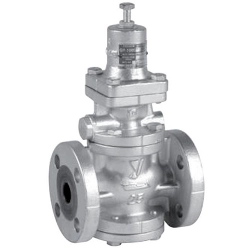 Reducing valve for steam Yoshitake GP-1000EN
Reducing valve for steam Yoshitake GP-1000EN
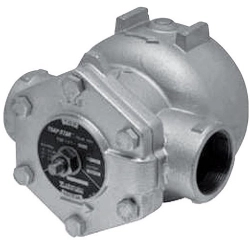 Float steam trap Yoshitake TSF-10
Float steam trap Yoshitake TSF-10
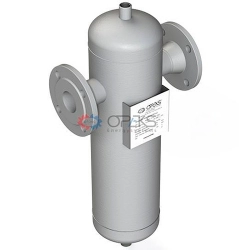 Centrifugal steam separator OPEKS-1-SC16-1-F50
Centrifugal steam separator OPEKS-1-SC16-1-F50
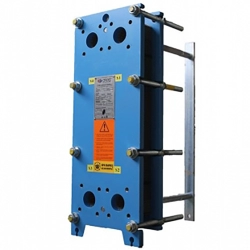 Plate heat exchanger THERMAKS РТА (GC)-16
Plate heat exchanger THERMAKS РТА (GC)-16
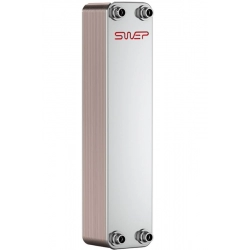 Brazed heat exchanger SWEP B25T
Brazed heat exchanger SWEP B25T
 Brazed heat exchanger SWEP B25THx20
Brazed heat exchanger SWEP B25THx20
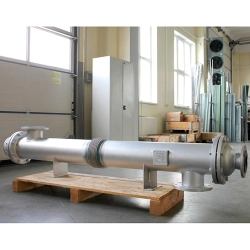 Shell and tube coolers
Shell and tube coolers
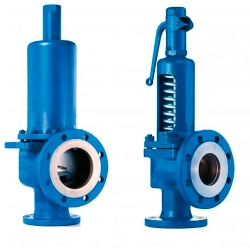 Safety valve LESER 441/442
Safety valve LESER 441/442
Sight glasses
What is a pipeline sight glass (window) for?
To control the state and the passage of processes in closed heat engineering or technological pipeline networks, systems and individual devices, it is far from always possible to do only with instrumentation and instrumentation (instrumentation). Often in such technical and technological cases it is very, very problematic to do without visual control. For technical support of the possibility of visual control over the state of working media and the processes occurring in them, special pipeline fittings are used in the form of translucent viewing windows (glasses).
Modern equipment and technologies do not stand still. Today, in the overwhelming majority of technical and technological cases, the control of the state of working media can be fully carried out by appropriate instrumental complexes. But, as a rule, such instrumental systems are rather complicated and expensive. Therefore, sight glasses serve not only as an old, tested, highly reliable tool for organizing technical or technological control, but also the simplest and most affordable means of reducing the cost of pipeline transport, heat engineering, and technological equipment.
A classic example is the steam traps of steam power or steam heat exchangers, the efficiency of which is very difficult to assess without visual control with the help of sight glasses (for the presence of passing steam). Of course, to solve such a problem, you can use special ultrasonic devices - leak detectors, or control automation. But such technical solutions turn out to be far more complex and expensive than simply installing a relatively inexpensive sight glass.

Types of sight glasses, the basics of their design
Structurally, a pipeline sight glass can be:
- a separate pipe fitting inserted (cut-in) into the controlled pipe line;
- overhead glass installed in a specially designed technological hole on the body of the controlled apparatus.
Slotted into the pipeline as separate fittings, sight glasses are:
- Cylindrical. They are a one-piece glass cylinder of the corresponding bore diameter, in combination with metal lateral connecting assemblies: flanges, threaded couplings or welded pipes. Typically, side fittings and cylindrical glass are assembled and tightened together with threaded tie rods. Cylindrical sight glasses, as a rule, are used in transport and technological equipment for the food, chemical, pharmaceutical industries, operating with relatively low operating pressures and temperatures.
- Cabinet, with overlaid glasses . They are a straight-through pipeline body (cast iron, steel, brass, bronze, etc.) of the corresponding diameter, in combination with connecting flanges or threaded couplings. There are special technological holes for overhead glass on the sides of the pass-through housing. Flat surface-mounted sight glasses are fixed to the body with a large-diameter clamping nut, or a clamping (bolted or studded) plate. Depending on the number of overhead glasses, they can be single-sided or double-sided, allowing visual inspection only through one or two viewing windows. The body structure with overlaid glass allows it to be used in steam power and heat exchangers for saturated and live steam, with high operating pressures, up to 40 MPa.
- Combination of sight glass and non-return valve . They are complex pipeline fittings that allow you to simultaneously perform two tasks - visual control of the working environment, and a check valve. As a rule, they are installed after the condensate drains of steam heat exchangers.
Manufacturing materials
Sight glasses in terms of strength are usually considered weak points of work equipment. In modern conditions, such an opinion can be confidently considered unfounded. In modern pipeline fittings and equipment, sight glasses are used, as a rule, heat-resistant, hardened shock-resistant, which, in terms of their strength characteristics, strictly correspond to the maximum permissible parameters of the working environment (in terms of pressure and temperature), even with a certain margin specified by technical requirements.
Sight glass housings can be manufactured:
- cast iron - for corrosive environments with operating pressures up to 1.0 - 1.6 MPa;
- stainless steel - for cleaners, incl. food, some chemically active media, with operating pressures up to 2.5 MPa;
- made of brass, bronze - for corrosive environments, with operating pressures up to 2.5 MPa;
- made of carbon steel - for corrosive environments, for systems with high working pressures.
Fields and Applications of Pipeline Sight Glasses
The most widely used sight glass installation is:
- in devices where the working medium undergoes phase transitions (steam-condensate processes);
- in mixers, where strictly proportional mixing of components must take place, incl. with a color change;
- in reactors where the mixing of reagents and chemical reactions must be carried out, with their clear visual signs.
The main areas of application of pipeline sight glasses are pipeline transport, heat exchange, technological systems in the following areas:
- in steam power and heat exchange systems of live or saturated steam, for monitoring the state of working steam, condensate, their phase transitions;
- in the petrochemical, chemical, food, pharmaceutical industries - to control the transportation of media, mixing of components, the passage of chemical reactions.
Parameters for the selection of viewing windows
When choosing a sight glass for installation in a closed duct (pipeline) system, special attention should be paid to the parameters:
- the maximum working pressure for which the glass is designed, MPa;
- maximum operating temperature, deg. WITH;
- body material, depending on the chemical activity (aggressiveness) of the working media;
- bore diameter DN, in mm;
- type of connecting assemblies: flanges, threaded couplings or welded nipples.
Viewing windows in the range of OPEKS Energosystems
Striving to provide our customers with only the highest quality pipeline fittings for the heat engineering piping of OPEKS heat exchangers of our own production, we offer the products of one of the recognized world leaders in the pipeline fittings market, the Yoshitake company (Japan), as sight glasses.
Like any other pipeline fittings of the Japanese company, Yoshitake branded sight glasses are characterized by impeccable quality and clear compliance with the stated strength parameters. The patented technologies of processing of sight glasses ensure their high resistance to dirt, allow them to work with maintaining sufficient light transmission for a long time, without the need for interruptions for maintenance.

